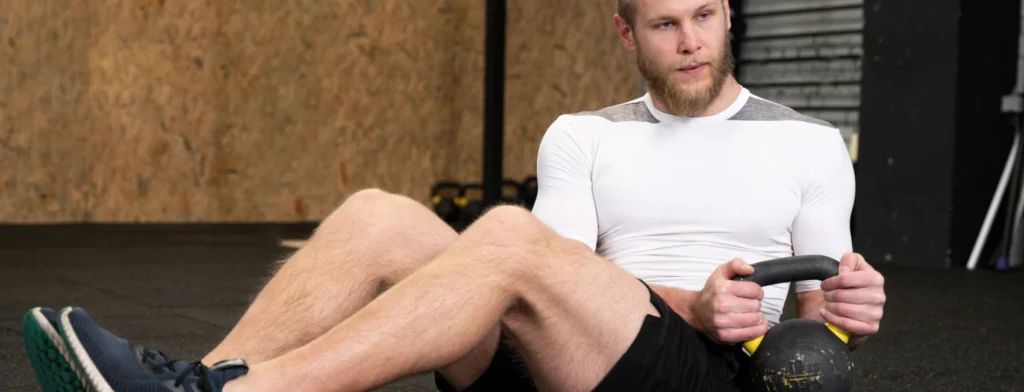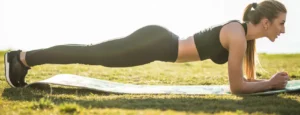Russian twists are a popular exercise that targets the core muscles while also engaging other muscle groups in the body. This exercise involves a twisting motion that challenges the obliques, rectus abdominis, and transverse abdominis, making it an effective way to strengthen and tone the midsection.
During Russian twists, the primary focus is on the obliques, which are the muscles located on the sides of the abdomen. These muscles play a key role in torso rotation and lateral flexion. By performing the twisting motion in Russian twists, you activate and strengthen the obliques, which helps improve overall core stability and enhances the aesthetic appearance of the waistline.
In addition to the obliques, Russian twists also engage the rectus abdominis, commonly known as the “six-pack” muscles. Although the rectus abdominis is not the primary target of the exercise, it is activated to stabilize the torso and maintain proper posture throughout the movement. This can contribute to improved core strength and aesthetics.
Furthermore, Russian twists require the engagement of the transverse abdominis, which is a deep muscle that wraps around the abdomen like a corset. The transverse abdominis plays a crucial role in core stability, acting as a natural weight belt that supports the spine and maintains proper alignment. Strengthening this muscle can help improve posture, reduce the risk of lower back pain, and enhance overall core strength.
While the focus of Russian twists is primarily on the core muscles, other muscle groups are also involved in supporting the movement. The hip flexors, located in the front of the hips, engage to stabilize the pelvis and assist in maintaining proper form. The erector spinae, a group of muscles along the spine, is activated to support the back and prevent excessive twisting or strain.
Russian twists can also help improve spinal mobility and flexibility. The rotational movement involved in this exercise promotes mobility in the thoracic spine, which is the upper portion of the back. This can be particularly beneficial for individuals who spend long hours sitting or have limited rotational movement in their daily activities.
Overall, Russian twists provide a challenging and effective workout for the core muscles, including the obliques, rectus abdominis, and transverse abdominis. By regularly incorporating this exercise into your routine, you can strengthen your midsection, improve core stability, enhance spinal mobility, and support overall functional movements. Remember to maintain proper form, start with an appropriate level of difficulty, and progress gradually to maximize the benefits and minimize the risk of injury.
Russian Twists – Instructions & Steps
- Sit with your buttocks on the ground and grab a weight, holding it in front of you (it will help to hold it by the ends and not the bar)
- Lean back and lift your legs off the ground, so they are in an upside down v shape
- Twist your torso to one side, engaging your core as you swing the weight to that side. Try to get the weight as close to the ground as possible
- Twist to the opposite side, and repeat
Benefits of Russian Twists
Russian twists offer several benefits for individuals looking to strengthen their core muscles and improve overall fitness. You can jack up the intensity by adding a weight such as a medicine ball or dumbbell, holding it in your hands as you twist. Here are some key advantages of incorporating Russian twists into your workout blend.
Core Strength
Russian twists primarily target the muscles of the core, including the obliques, rectus abdominis, and transverse abdominis. By engaging and strengthening these muscles, Russian twists can enhance core strength and stability. A strong core is essential for maintaining proper posture, improving athletic performance, and reducing the risk of lower back pain.
Abdominal Definition
The twisting motion in Russian twists helps tone and sculpt the obliques, which are the muscles responsible for creating a defined waistline. Regularly performing Russian twists can contribute to a more aesthetic appearance of the midsection and enhance the overall muscular definition of the abdominal area.
Improved Spinal Mobility
Russian twists involve a rotational movement that helps improve flexibility and mobility in the thoracic spine, which is the upper portion of the back. This can be particularly beneficial for individuals who spend long hours sitting or have limited rotational movement in their daily activities. Enhanced spinal mobility can improve posture and reduce the risk of stiffness or discomfort in the upper back.
Balance and Coordination
Russian twists require the engagement of multiple muscle groups simultaneously, which challenges your balance and coordination. As you twist your torso while maintaining stability, you develop better body awareness and coordination between the upper and lower body. This can translate to improved performance in sports and everyday activities that require multi-directional movements.
Calorie Burning and Fat Loss
Russian twists can be an effective exercise for burning calories and promoting fat loss. The twisting motion and engagement of multiple muscle groups elevate your heart rate, increasing the intensity of the exercise and promoting calorie expenditure. Including Russian twists in a comprehensive workout routine can support weight management and contribute to overall body fat reduction.
Functional Movement Patterns
The twisting motion in Russian twists mimics many real-life movements, such as twisting, reaching, and rotating. By training these functional movement patterns, you improve your ability to perform daily activities and sports with greater ease and efficiency. This can enhance your overall functional fitness and make daily tasks, such as carrying groceries or playing recreational sports, easier and more enjoyable. (Because who doesn’t like carrying groceries.)
More About Russian Twists
As effective as they are for helping build your core, Russian twists are not considered compound exercises. They are an isolation exercise primarily targeting the muscles of the core, particularly the obliques. Russian twists are typically performed by sitting on the ground, leaning back slightly, and rotating the torso from side to side while holding a weight or medicine ball.
During Russian twists, the following muscle group is primarily engaged:
- Obliques: The muscles on the sides of the waist are the main focus of this exercise, helping to generate the twisting motion.
Russian twists are effective for strengthening the obliques and improving rotational stability. However, since they primarily involve movement in the torso and target a specific muscle group, Russian twists are not classified as compound exercises.
To engage in compound movements that work multiple muscle groups simultaneously, exercises such as wood choppers, deadlifts, lunges, and bench presses are more appropriate choices.



